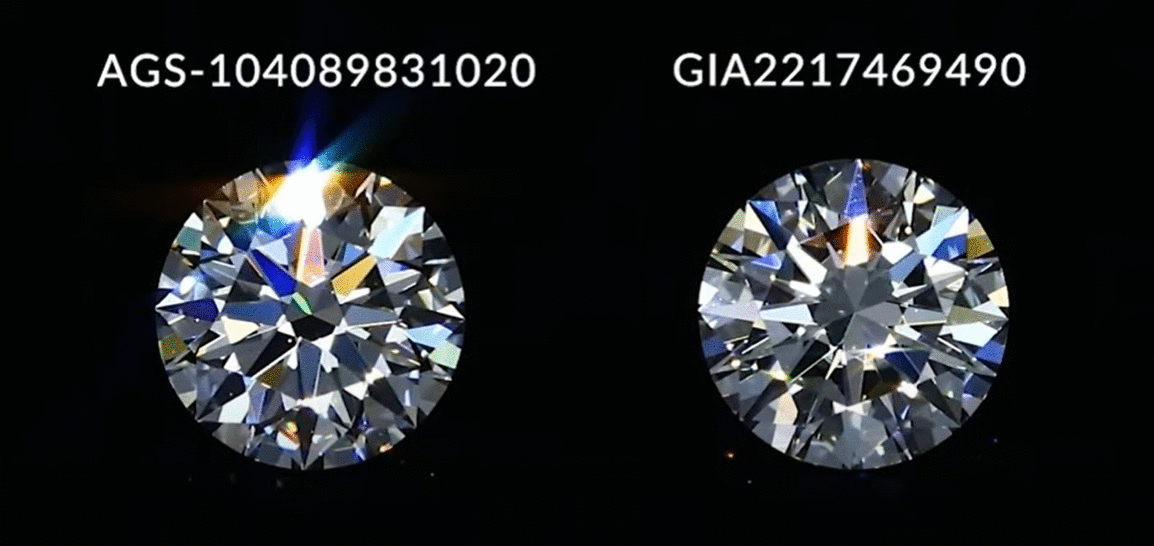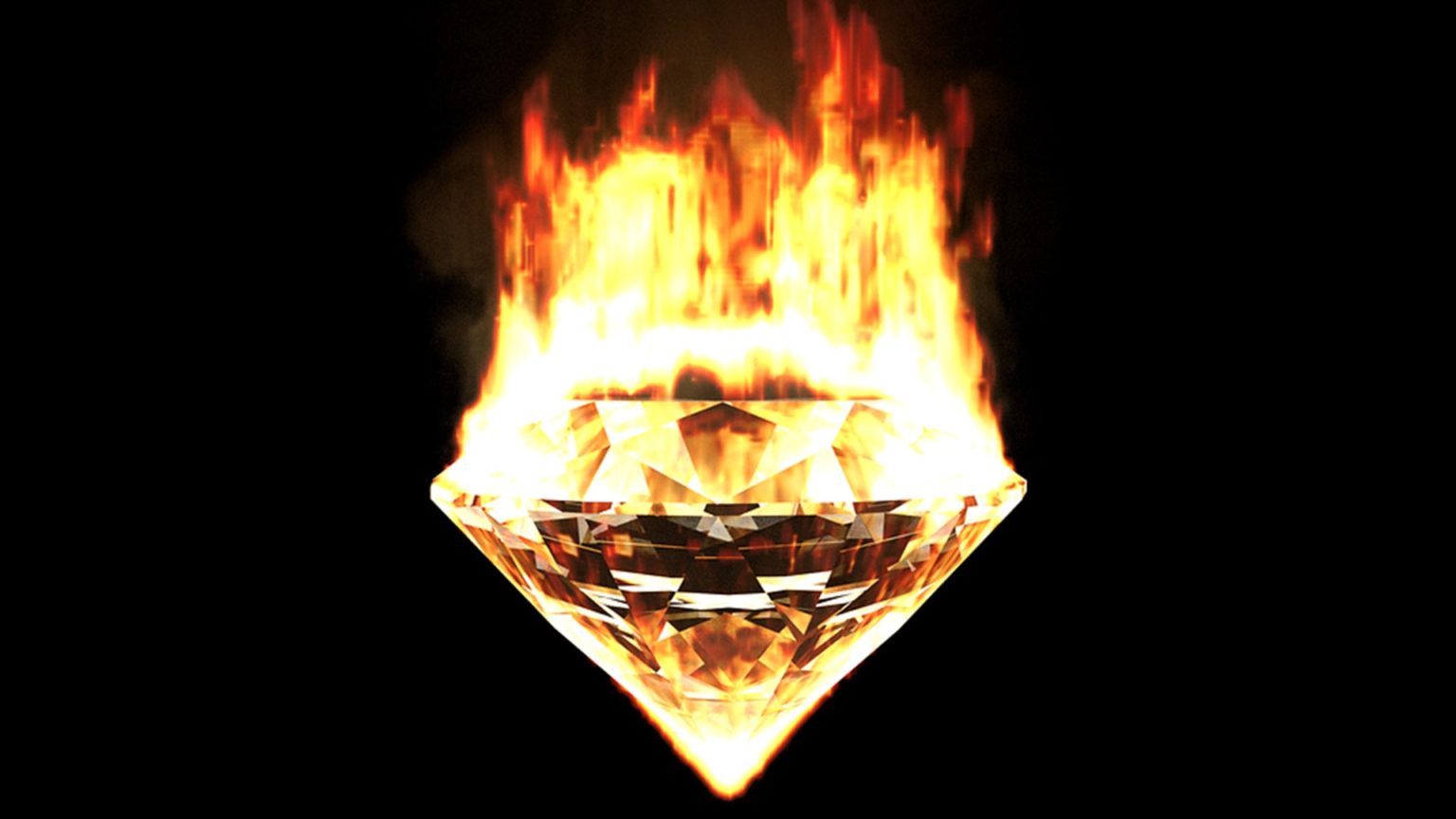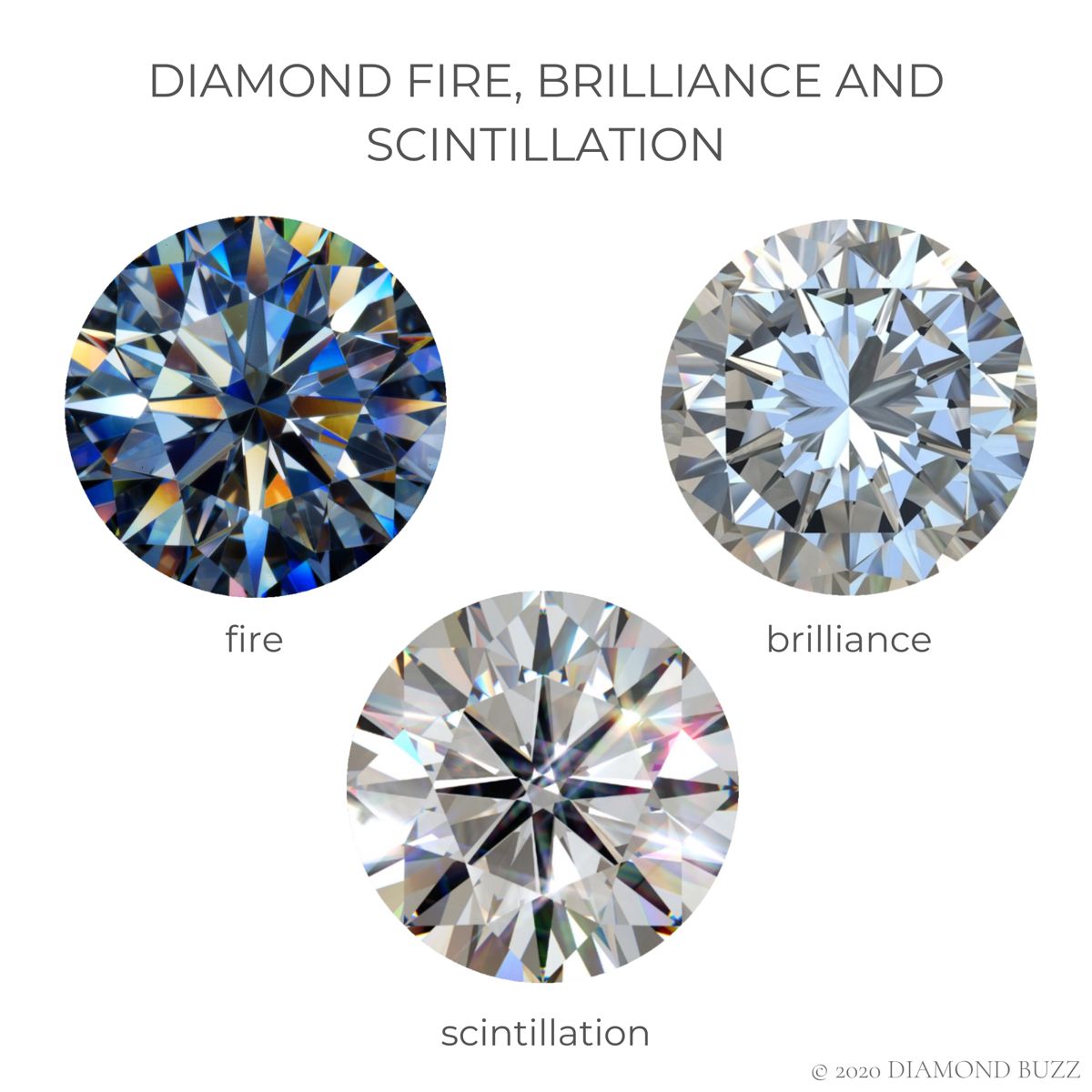Diamond Fire: Everything You Need To Know & More!
Have you ever gazed upon a diamond and been mesmerized by its dance of colors? The captivating "fire" within a diamond, that vibrant display of spectral hues, is not just a visual treat; it's a direct reflection of the stone's interaction with light and a key indicator of its quality.
The allure of a diamond extends beyond its inherent brilliance and clarity; the presence of "fire" is a crucial element in assessing its overall appeal. This phenomenon, scientifically known as dispersion, is the ability of a diamond to separate white light into its constituent colors, creating a spectrum of rainbow flashes. The intensity and beauty of this fire are directly related to how the diamond is cut, specifically the angles and proportions of its facets, the polished surfaces that reflect and refract light.
Understanding the factors influencing this mesmerizing display is crucial for anyone considering purchasing a diamond or simply appreciating the artistry of these precious stones. The cut of a diamond plays a pivotal role in the fire it exhibits. A well-cut diamond will have facets carefully arranged to maximize the dispersion of light, resulting in a more pronounced and captivating display of color. Poorly cut diamonds, on the other hand, may exhibit less fire, appearing dull and lifeless.
Diamond fire is even an element of GIAs (Gemological Institute of America) grading scale, underscoring its significance in determining the value and desirability of a diamond. This grading system evaluates the fire, brilliance, and scintillation of the diamond, as well as its cut, clarity, color, and carat weight. The presence and intensity of fire directly impact the overall grade assigned to the diamond. This is because diamond fire is an indicator of light dispersion, a critical factor in determining its overall beauty.
The term "fire" itself is a descriptive term, representing the human perception of light dispersion. When white light enters a diamond, it encounters the facets and is broken down into the colors of the spectrum. This phenomenon is what creates the flashes of rainbow hues that we admire. The brilliance of a diamond is the white light reflected back to the viewer, while the fire is the colored light that's visible. These two features work in tandem to create the overall appearance of the stone.
Diamond fire is influenced by the cut, which affects how light is dispersed, and includes the angles and proportions of its facets. It is also affected by external sources such as the quality and type of light that's falling on the stone. For example, LED light is much more beneficial for the forming of diamond fire than fluorescent light.
Moving beyond the world of precious stones, the potential for devastation caused by fire is a harsh reality. This was tragically illustrated on the night of February 18th when a house fire claimed the lives of Erica and Zach Dymond, leaving a community in mourning. The incident occurred in the community, and the loss was deeply felt by all who knew the couple.
The impact of such events is felt far and wide. The loss of a home and possessions, the emotional toll on the community, and the long road to recovery are just some of the challenges faced in the wake of a fire. For the Dymond family, the tragedy was compounded by the loss of life, leaving loved ones to grapple with unimaginable grief.
Another tragic incident unfolded on April 3rd when an unexpected electrical fire ripped through an apartment building. The fire forced all residents to evacuate, leaving many without homes or belongings. The uncertainty and disruption caused by such an event highlight the importance of fire safety and preparedness.
These tragic events underscore the importance of fire safety measures and community support in times of crisis. It also highlights the resilience of communities in the face of adversity. Whether it's the devastating house fire that claimed the lives of the Dymonds or the apartment fire that left residents displaced, these events serve as a poignant reminder of the importance of fire safety and community support.
In the realm of wildfires, the impact on the environment and communities is substantial. On a recent occasion, a fire burned through grass and brush just northwest of the McDowell Mountains, impacting multiple homes and forcing the evacuation of over a hundred homes. This incident, similar to many others across the globe, highlights the devastating impact of wildfires. The scope and scale of wildfires, which are often exacerbated by dry conditions, can lead to significant property damage, environmental degradation, and even loss of life. These events necessitate a coordinated response from fire and forestry services, organizations like Diamond Fire & General Insurance Inc. which is one of the companies dedicated to providing comprehensive fire and forestry services. These services often include wildland fire management, prescribed burning, and fire risk assessments, tailored to meet specific needs.
In Diamond's world, the fire is not about destruction, but the beauty. A diamond's fire is the effect produced when white light disperses into rainbow colors when it hits the diamond's facets, which creates a mesmerizing display of spectral hues.
Understanding the elements that contribute to a diamond's fire is essential to appreciating its value and beauty. The quality of the cut, the type of light it's exposed to, and the clarity of the stone all play a role in this dynamic. This understanding empowers consumers to make informed decisions and appreciate the artistry involved in crafting these exquisite gemstones.
The fire observed in diamonds is influenced by the stone's cut, which affects how light is dispersed, and includes the angles and proportions of its facets. Diamond cut and fire are wrapped up thoroughly in each other.
Unlike white brilliance, diamond fire is a colored sparkle that is the result of white light moving through the stone and breaking down into individual colors. This is a pretty fitting alternate name for the fire of a diamond given its properties.
The fire in a diamond is the effect produced when white light disperses into rainbow colors when it hits the diamond's facets. There are two main kinds of facets: physical facets and virtual facets. A physical facet is an actual cut in a diamond. Fire is almost the opposite of brilliance, and its also known as dispersion.
The diamond fire burned near 128th street and ranch.



Detail Author:
- Name : Destiny Hickle
- Email : hamill.laverne@hotmail.com
- Birthdate : 1977-08-15
- Address : 8217 Krajcik Curve Hintzmouth, SC 49333-2190
- Phone : 682-358-4302
- Company : Goyette-Collier
- Job : Benefits Specialist
- Bio : Eum et qui accusantium quos accusamus natus. Tenetur ullam iure explicabo in. Et itaque nihil aut sint. Accusamus quasi voluptas vel.